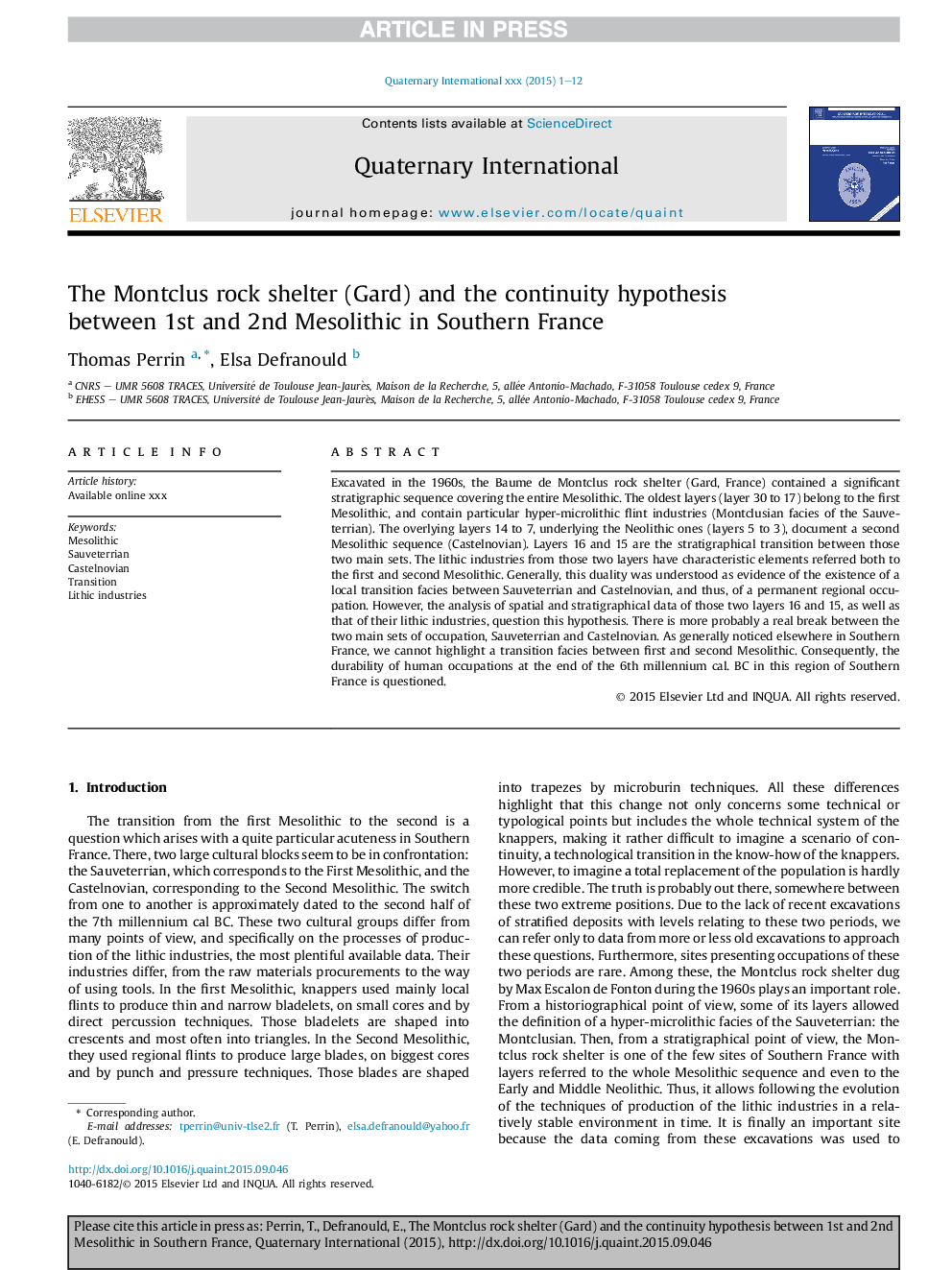| کد مقاله | کد نشریه | سال انتشار | مقاله انگلیسی | نسخه تمام متن |
|---|---|---|---|---|
| 5113894 | 1484084 | 2016 | 12 صفحه PDF | دانلود رایگان |
عنوان انگلیسی مقاله ISI
The Montclus rock shelter (Gard) and the continuity hypothesis between 1st and 2nd Mesolithic in Southern France
دانلود مقاله + سفارش ترجمه
دانلود مقاله ISI انگلیسی
رایگان برای ایرانیان
کلمات کلیدی
موضوعات مرتبط
مهندسی و علوم پایه
علوم زمین و سیارات
زمین شناسی
پیش نمایش صفحه اول مقاله

چکیده انگلیسی
Excavated in the 1960s, the Baume de Montclus rock shelter (Gard, France) contained a significant stratigraphic sequence covering the entire Mesolithic. The oldest layers (layer 30 to 17) belong to the first Mesolithic, and contain particular hyper-microlithic flint industries (Montclusian facies of the Sauveterrian). The overlying layers 14 to 7, underlying the Neolithic ones (layers 5 to 3), document a second Mesolithic sequence (Castelnovian). Layers 16 and 15 are the stratigraphical transition between those two main sets. The lithic industries from those two layers have characteristic elements referred both to the first and second Mesolithic. Generally, this duality was understood as evidence of the existence of a local transition facies between Sauveterrian and Castelnovian, and thus, of a permanent regional occupation. However, the analysis of spatial and stratigraphical data of those two layers 16 and 15, as well as that of their lithic industries, question this hypothesis. There is more probably a real break between the two main sets of occupation, Sauveterrian and Castelnovian. As generally noticed elsewhere in Southern France, we cannot highlight a transition facies between first and second Mesolithic. Consequently, the durability of human occupations at the end of the 6th millennium cal. BC in this region of Southern France is questioned.
ناشر
Database: Elsevier - ScienceDirect (ساینس دایرکت)
Journal: Quaternary International - Volume 423, 22 November 2016, Pages 230-241
Journal: Quaternary International - Volume 423, 22 November 2016, Pages 230-241
نویسندگان
Thomas Perrin, Elsa Defranould,